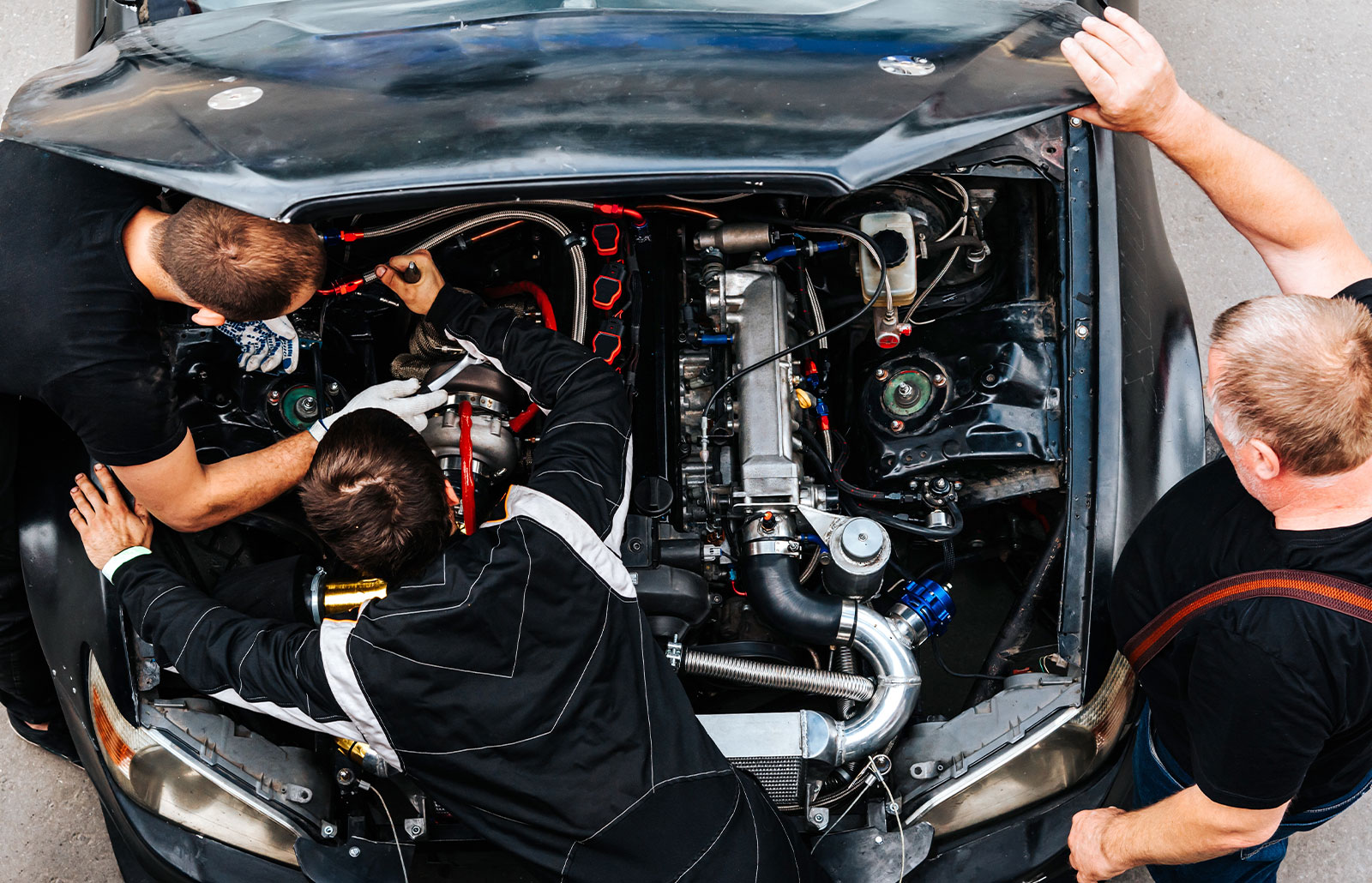
In the world of motorsport, no two circuits are the same. From the sweeping corners of Phillip Island to the tight hairpins of Mount Panorama, each track presents unique challenges that demand a tailored approach to car setup. Success on race day doesn’t just come from raw speed—it comes from meticulous preparation, where every detail of the car is tuned to match the characteristics of the circuit.
Here we’ll take you behind the scenes and show you how our team fine-tunes our race cars to meet the demands of different circuits, unlocking the perfect blend of speed, handling, and durability.
Understanding the Circuit’s Unique Demands
Before the car even hits the track, our team spends a significant amount of time analyzing the circuit. Each track has its own combination of straights, corners, elevation changes, and surface conditions. The key to setting up the car lies in understanding these variables and how they affect the car’s performance.
- Fast, flowing circuits like Phillip Island demand a setup that maximizes speed and stability through long, high-speed corners.
- Tight, twisty circuits like Mount Panorama require a setup that prioritizes agility and grip to navigate sharp turns and elevation changes.
- Tracks with mixed conditions, such as street circuits or circuits prone to changing weather, need flexible setups that can perform well in both wet and dry conditions.
The goal is to optimize the car for both speed and consistency across the entire lap, and that’s where precise tuning comes into play.
Key Areas of Car Tuning
To get the most out of the car on each circuit, we focus on a few critical areas of tuning:
1. Aerodynamics: Balancing Downforce and Speed
Aerodynamics play a vital role in a car’s performance. The key challenge is balancing downforce and drag:
- Downforce presses the car onto the track, giving it better grip through corners. This is crucial on tracks with lots of fast, sweeping turns like Phillip Island or Sydney Motorsport Park, where high-speed cornering stability is key.
- Drag, on the other hand, slows the car down on straights. On tracks like Bathurst’s Conrod Straight, minimizing drag is essential to maximize straight-line speed.
Our team adjusts the angle of the front splitters, rear wings, and other aerodynamic elements to find the perfect balance between these two forces. On high-speed circuits, we reduce downforce slightly to increase top-end speed, while on technical circuits, we dial in more downforce to improve cornering ability.
2. Suspension: Fine-Tuning for Grip and Control
Suspension setup is crucial for handling and overall control, and it’s one of the most track-dependent aspects of car tuning. The suspension needs to be optimized for the specific surface and cornering profile of each track:
- Stiffer suspension setups provide better responsiveness and are often used on smooth tracks with fast corners, giving the driver precise control at high speeds.
- Softer suspension setups improve grip on bumpy or uneven tracks, ensuring the car remains stable over rough surfaces and curbing.
Tracks like Mount Panorama with significant elevation changes and challenging terrain require a suspension setup that offers flexibility, while smoother circuits allow for stiffer settings to maximize handling precision.
3. Tires: Choosing the Right Compound and Pressure
Tire choice and tire pressure are critical in endurance racing. The type of tire compound (soft, medium, or hard) we select depends on track conditions and race length:
- Softer compounds provide more grip but wear out faster, making them ideal for shorter stints or cooler conditions.
- Harder compounds last longer but offer less grip, making them suitable for tracks with high temperatures or races requiring fewer pit stops.
Additionally, tire pressure needs to be adjusted to match the track’s layout and surface. Higher pressures improve straight-line speed but reduce grip, while lower pressures enhance grip, especially in corners, but increase rolling resistance.
By closely monitoring tire wear, temperature, and performance during practice sessions, we can dial in the perfect tire setup for race day.
4. Brakes: Optimizing for Performance and Longevity
Brakes are another area where tuning is crucial, particularly on tracks with lots of heavy braking zones like Bathurst. We adjust the brake balance (the distribution of braking force between the front and rear wheels) and the brake cooling setup based on the track’s demands.
- On tracks with long straights followed by sharp corners, we ensure that the brake system can handle the high braking loads without overheating.
- On tracks with fewer heavy braking zones, we may reduce brake cooling to improve aerodynamics and reduce drag.
Managing brake wear is essential in endurance races, as overuse can lead to brake fade or failure late in the race. The goal is to balance performance and durability, allowing drivers to maintain consistent braking power throughout the race.
5. Gear Ratios: Optimizing for Speed and Acceleration
Gear ratios determine how the car accelerates and reaches its top speed. For each track, we adjust the gear ratios to match the circuit’s specific demands:
- On high-speed tracks like Phillip Island, we prioritize longer gear ratios that maximize top speed on the straights.
- On technical tracks like The Bend Motorsport Park, shorter gear ratios are better for quick acceleration out of tight corners.
Getting the right gear ratio setup allows the driver to stay in the engine’s optimal power band, ensuring the car can accelerate quickly while also hitting the highest speeds possible on longer straights.
Adapting Throughout the Weekend
Tuning the car for a specific track isn’t a one-time process—it’s an ongoing effort that continues throughout the race weekend. During practice sessions, we gather valuable data on how the car is handling the circuit in real-world conditions. Everything from track temperature to tire wear is closely monitored, and our engineers use this data to make final adjustments.
By the time we hit qualifying and race day, the car has been fine-tuned to perform at its absolute best for that particular circuit.
The Driver’s Role in Tuning
While engineering and data analysis play a huge role in car tuning, the driver’s feedback is just as important. Drivers provide insight into how the car feels under different conditions—whether the car is understeering in corners, how it reacts under braking, or if it’s losing grip over bumps.
Their feedback allows the team to make critical adjustments that aren’t always apparent through data alone. This partnership between driver and engineer ensures the car is perfectly tuned for each circuit, giving the team the best possible chance of success.
Tuning for Victory
Tuning a race car for different circuits is a science, but it’s also an art. It requires an in-depth understanding of the track’s characteristics, the car’s performance limits, and the driver’s feel for the car. By carefully balancing all of these factors, we can extract every bit of performance from the car, giving our drivers the tools they need to perform at their best on race day.
Whether it’s the long straights of Bathurst or the technical turns of The Bend, our team’s meticulous approach to car setup ensures that we’re always prepared for the unique demands of each track. And with every lap, we’re fine-tuning our way to victory.

